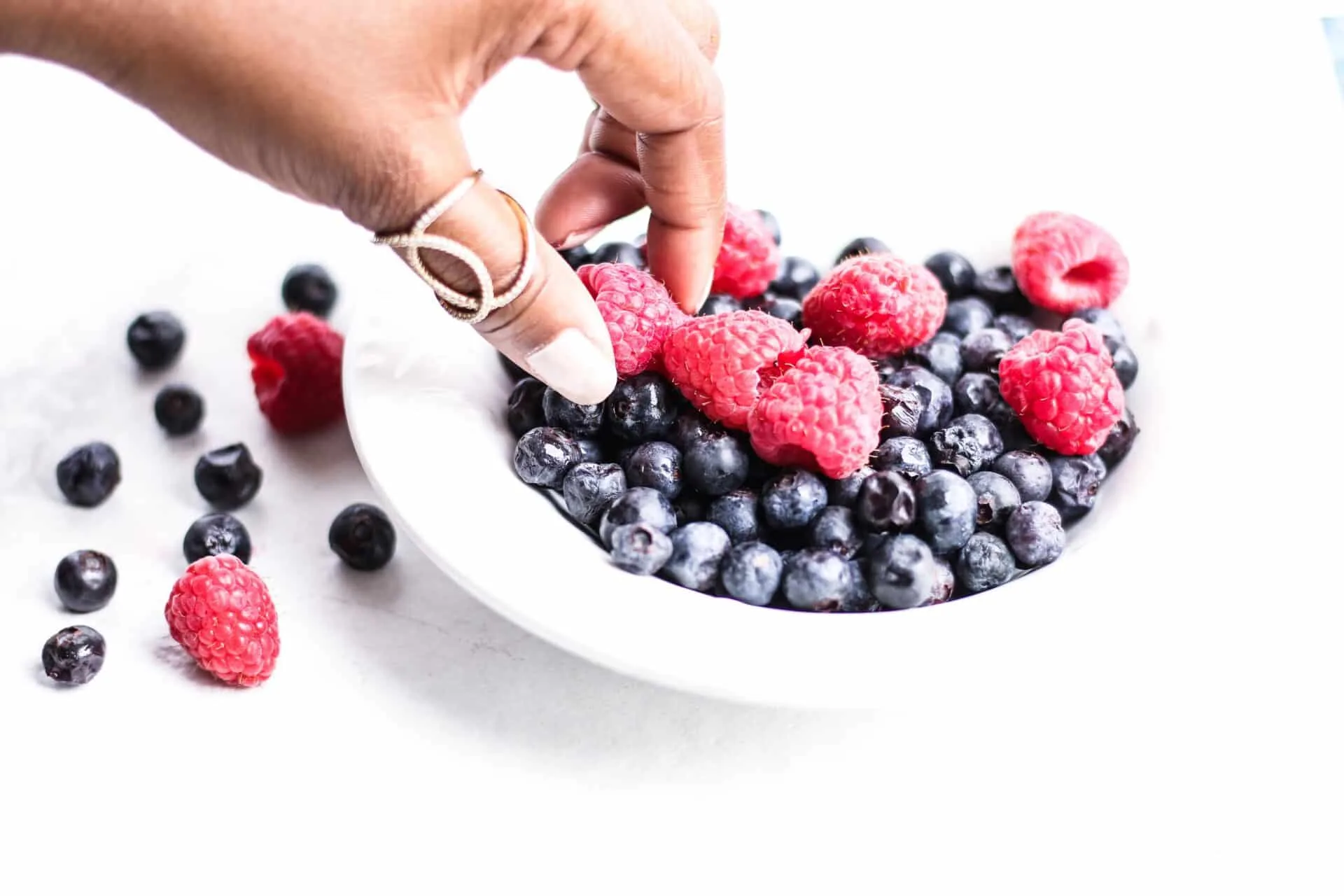Are you looking for a way to freeze blueberries without getting mushy? If so, you’re in luck! Freezing blueberries is a great way to preserve them and keep them fresh. In this article, we’ll provide step-by-step instructions on how to freeze blueberries without getting mushy. We’ll also provide some tips to help you get the best results and enjoy your frozen blueberries for months to come. So, let’s get started!To freeze blueberries, you will need the following items: a baking sheet, parchment paper, a freezer bag or container, and the blueberries. Start by rinsing off the blueberries in cold water and patting them dry with a paper towel or cloth. Spread the blueberries out on the parchment-lined baking sheet and place them in the freezer for 1-2 hours. Once they are frozen, transfer them to a freezer bag or container and store them in the freezer for up to 12 months.
Preparing the Blueberries
Preparing blueberries before you cook with them is an important step to ensure they taste great. Start by rinsing the berries in cold water, and then gently pat them dry with a paper towel. Gently pick through the berries for any that may be mushy or spoiled, and discard these. If you are adding sugar to your recipe, add it now and stir gently to combine. This will help the sugar dissolve evenly and evenly sweeten the blueberries. For a more intense flavor, you can macerate the blueberries in sugar before adding them to your recipe. To do this, place your berries in a bowl and sprinkle with sugar. Stir gently to combine and let sit for 15-30 minutes before using in your recipe.
When ready to use, drain off any excess liquid from the macerated berries before adding them into your recipe. This helps keep the texture of your blueberry dish intact as well as prevent it from becoming overly sweetened. Enjoy!
Selecting the Right Freezer Containers
When it comes to storing food in the freezer, it’s important to select the right freezer containers. Not only do you want to make sure that your food is safe and secure, but you also want to ensure that your containers are designed to withstand the extreme temperatures of a freezer. Here are a few tips for selecting the right freezer containers for your needs.
The first thing you need to consider when selecting freezer containers is what type of material they are made from. Many types of plastic are simply not strong enough to withstand the cold temperatures of a freezer, so you’ll need to find a container that is specifically designed for this purpose. Some materials, such as stainless steel, are designed specifically for use in freezers and can handle cold temperatures without cracking or breaking.
You’ll also want to consider how much food you plan on storing in each container. If you plan on storing large amounts of food in one container, then you’ll need something with a larger capacity. On the other hand, if you’re only looking to store smaller amounts of food then a smaller container may be more suitable.
Finally, consider the shape and size of the containers you’re looking at. Rectangular containers can often fit more food than round ones, so if space is an issue then rectangular containers may be better suited for your needs. Additionally, square or rectangular-shaped containers can be stacked more easily than other shapes, which can help save space in your freezer.
By taking these factors into consideration when selecting your freezer containers, you can ensure that your food remains safe and secure while stored in the freezer. With proper care and maintenance, your freezer containers should last for many years and provide reliable storage for all of your frozen foods!
How to Layer Blueberries in Containers
Layering blueberries in a container is an easy way to grow a plentiful crop. This method of gardening maximizes space and allows you to quickly and easily harvest your blueberries. Here is how you can layer blueberries in containers:
The first step is to choose the right type of container for your blueberry plants. You need a container with drainage holes in the bottom, as well as enough room for several layers of soil. Make sure the container is large enough that it can accommodate at least two layers of soil, as well as the mature blueberry bush.
Next, add several inches of soil to the bottom of the container. This will provide a base layer for your blueberry plants. Be sure to use a soil mix that is specifically designed for growing blueberries, as this will ensure that your plants get all the nutrients they need.
Once you have added the base layer of soil, it’s time to add your first layer of blueberry plants. Plant each plant at least six inches apart from each other, so that they have enough room to spread out and develop properly. After planting your first layer of plants, cover them with several more inches of soil and water them thoroughly.
Then repeat this process with additional layers of blueberry plants, adding more soil between each layer until you reach the top of the container. Water each layer thoroughly before moving on to the next one, and be sure to monitor your plants regularly for signs of stress or disease. Once you’ve finished planting all your blueberry plants, cover them with mulch or other organic matter to help keep them moist and protect them from extreme temperatures and weeds.
By following these steps, you can easily create multiple layers of healthy blueberry bushes in a single container! Not only does this maximize space in small yards or gardens, but it also makes harvesting much easier since all your berries will be concentrated in one area!
Preparing Syrup or Sugar Water for Freezing
Making syrup or sugar water for freezing is an important step in preserving food. The syrup or sugar water helps to protect the food from spoilage and also adds flavor. It can be used to preserve fruits, vegetables, and other foods. It also helps to maintain the texture and consistency of the food when frozen.
The first step in making syrup or sugar water is to heat up cold water until it is just warm. Then, dissolve some sugar in the warm water until it forms a syrup-like consistency. The amount of sugar needed will depend on how sweet you want your syrup to be. Once the sugar has dissolved completely, let the solution cool before using it for freezing.
When using syrup or sugar water for freezing, it’s important to use a container that is suitable for freezing temperatures. Glass containers are not recommended as they may crack when exposed to extreme cold temperatures. It’s best to use plastic containers that are labeled as freezer-safe. Make sure the container is sealed tightly before placing it in a freezer so that no air can get inside and cause spoilage of the food inside.
When preparing your syrup or sugar water, make sure not to overfill the container as this can cause overflow during freezing and create a mess in your freezer. If you are using fruits or vegetables for freezing, make sure to wash them properly beforehand and pat them dry before adding them into the syrup. This will help them retain their shape and texture during freezing and give you better results when thawing them out later on.
Making syrup or sugar water for freezing is an easy process that can help preserve your food for longer periods of time while still keeping its original flavor and texture intact. With proper preparation, you can enjoy your frozen foods with excellent results!

Freezing Blueberries with Syrup or Sugar Water
Freezing blueberries is an easy way to preserve them for use in a variety of recipes. Whether you plan to use them in smoothies, pies, cobblers, or simply as a snack, you can easily freeze your blueberries with syrup or sugar water. Here is how to do it:
First, wash the blueberries and allow them to drain. Then, in a saucepan, combine 1 cup of water with 1 cup of sugar and bring the mixture to a boil. Reduce the heat and simmer for five minutes before removing it from the heat.
In a separate bowl, mix together one cup of syrup and one cup of cold water until fully combined. Next, pour the cooled syrup mixture over the drained blueberries and stir gently until all of the berries are coated. Then spread out the berries on a cookie sheet lined with parchment paper.
Place the cookie sheet in the freezer for about an hour, until the berries are frozen solid. Finally, remove them from the freezer and transfer them into freezer-safe bags or containers. Store them in the freezer for up to six months.
By freezing your blueberries with syrup or sugar water, you can enjoy their sweet taste all year long!
Freezing Blueberries Without Syrup or Sugar Water
Freezing blueberries is one of the best ways to preserve their flavor and texture. While freezing blueberries with syrup or sugar water is a popular method, it is not the only way to freeze them. There are several other methods to freeze blueberries without syrup or sugar water.
The first method is to simply place the berries in a single layer on a baking sheet lined with parchment paper. Make sure that each berry has enough room so that they don’t touch each other. Freeze the baking sheet for at least two hours, or until the berries are completely frozen. Once frozen, transfer the blueberries into freezer-safe airtight containers or bags and store in the freezer for up to 6 months.
Another method for freezing blueberries without syrup or sugar water is to spread them out on a baking sheet and sprinkle them lightly with sugar or honey. This will add some sweetness and help preserve their flavor as well as texture when frozen. Once they are covered in sugar, place the baking sheet in the freezer for two hours before transferring into airtight containers or bags for storage in the freezer.
Lastly, you can also freeze blueberries without any added sweetener by simply washing them thoroughly, draining off any excess water, and then transferring them directly into airtight containers or bags before placing in the freezer. This method requires no added sweetener at all but will still yield delicious frozen blueberries that can be enjoyed later on!
No matter which method you choose, it’s important to use ripe and fresh blueberries for best results when freezing without syrup or sugar water. If you’re using frozen berries, make sure that they are completely thawed before using in recipes or eating as snacks!
Freezing Blueberries
Freezing blueberries is an easy way to enjoy the sweet flavor of blueberries all year round. Here are some tips for successful freezing of blueberries:
Choose the Right Variety
When choosing blueberries for freezing, opt for high-quality, firm berries. Avoid berries that are soft, mushy, or damaged. If possible, choose wild or organic varieties for optimal flavor.
Wash and Dry the Berries
Before freezing your blueberries, make sure to rinse them well with cold water to remove any dirt or debris. Allow them to dry completely on a towel or paper towel before putting them in the freezer.
Spread Out on a Tray
Once you have washed and dried the blueberries, spread them out on a tray lined with parchment paper. This will help prevent the berries from sticking together and clumping when frozen.
Flash Freeze
To ensure that your berries freeze quickly and evenly, place the tray in the freezer for about an hour before transferring them to an airtight container or bag. This process is called “flash freezing” and it helps preserve texture and flavor.
Label Your Bag
When storing your frozen blueberries in an airtight container or bag, make sure to label it with the date so you can keep track of how long they’ve been in the freezer. Frozen blueberries should last up to one year when stored properly.
Following these tips will help ensure that your frozen blueberries remain fresh and delicious for months to come!

Conclusion
Freezing blueberries can be a great way to preserve them for a longer period of time. It doesn’t require much effort and you don’t have to worry about them getting mushy. The process involves washing, drying, and then freezing the blueberries on a baking sheet. Once frozen, they can be stored in an airtight container or bag for up to one year. You can also use frozen blueberries in recipes such as smoothies, pies, muffins, and more. With these tips in mind, you are sure to enjoy your fresh-frozen blueberries for months to come!
When it comes to freezing blueberries successfully, it is important to remember that proper preparation and storage is key. By following the steps outlined in this guide, you will be able to store your frozen blueberries without worrying about them getting mushy or losing their flavor. Not only will you save time by not having to go out and buy fresh berries every few days but you will also be able to enjoy the sweet taste of fresh berries all year round!



